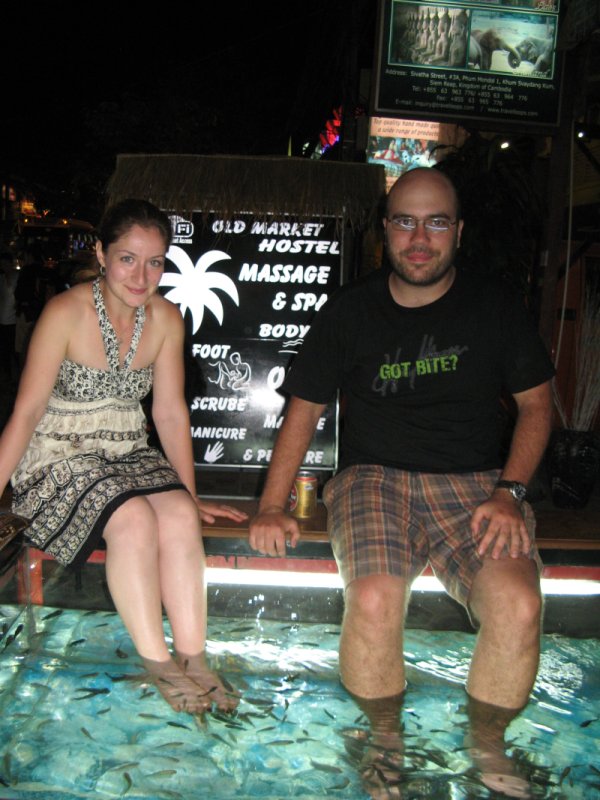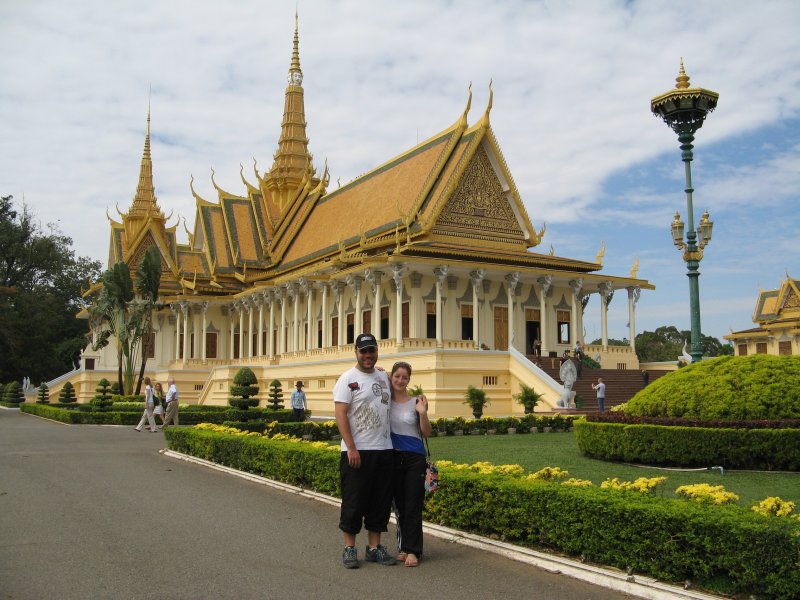Inside the Angkor area there was also a butterfly exposition. Tanya, the attendant, was so nice to walk us through. We were able to see many species under all stages of development: egg, larva, pupa and butterfly.
Not far away there was also a landmine museum, telling the story of finding and removing the mines left behind by the US military and the Khmer Rouge. Attached to the museum is a relief center hosting 20-30 children victims of land mines. Notice in the last picture – the technician is using same kind of tool as we do.





































